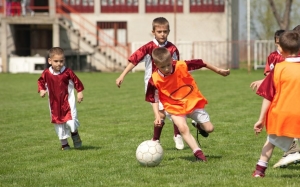Connect With Us
Blogs
Displaying items by tag: weak ankles
Helpful Hints for Hikers
Hiking is a great way to stay in shape, spend time with family and friends, and appreciate the beauty of nature. At Superior Foot & Ankle Care Center, we want our patients to keep their feet safe while enjoying this activity. Below are some recommendations before you hit the trail.
Shoe Sense—it all starts with the right hiking shoes or boots. The terrain on trails can be steep, uneven, and unstable. It’s essential that you have the proper foot gear. Get professionally fitted and buy quality-hiking shoes that protect your feet from moisture, provide good support and shock absorption, and have a tread to help prevent slips and slides. If you have chronic foot problem such as weak ankles or heel spurs, see our podiatrists, Dr. Victoria M. Foley or Dr. Constance Ornelas get recommendations for shoe styles and other modifications that will best accommodate your condition.
Proper Planning—if you are planning to hike on a trail you’ve never been on, study a map to determine the length of the trail, whether it’s “in and out” or a circle, the elevation, and how the trail is maintained. Take into consideration your current physical condition and don’t overdo it. Warm-up and stretch before starting a hike to avoid injuries like Achilles tendonitis.
Knapsack Know-How—in addition to granola bars and plenty of water (which will not only keep you hydrated but also reduce the chances of painful swelling in your feet and ankles), you should include a few other items in your backpack. Blisters, though small, can ruin a hike. Pack moleskin and use it as soon as you notice rubbing or a sore spot on your foot. It’s also a good idea to have wraps or elastic bandages in case of an ankle sprain and bandages and antibiotic ointment for minor scrapes or insect bites.
Foot and ankle injuries require immediate medical attention. If you fall, twist an ankle, or injure your feet or ankles in any way while hiking, contact our Long Beach office in Douglas Park, CA by calling (562) 420-9800 as soon as possible. Until you can get in to see us, follow the RICE regimen: Rest, Ice, Compression, and Elevation.
Celebrating Youth Sports Safely
During July, we celebrate National Youth Sports Week. As many of our young patients begin to think about conditioning for fall sports, we at Superior Foot & Ankle Care Center would like to share some information about how to protect your child’s feet and encourage safe sports participation.
Start Early
Participating in a sport has many benefits. It helps your child be physically fit and maintain a healthy weight and hopefully inspires them to develop a healthy lifestyle. While it may seem like the start of the school year is still far away, it takes time to get a body properly conditioned for a sport. If your child has spent the summer glued to their phone and video games, it’s essential that they get off the couch and start some regular physical activity. Check with your child’s coach to see if there are specific conditioning exercises that are recommended.
Put Your Best Foot Forward
Before the start of a new sports season, it’s a good idea to get a checkup with one of our podiatrists, Dr. Victoria M. Foley or Dr. Constance Ornelas. You can call our Long Beach office at (562) 420-9800 to schedule an appointment. The foot doctor can do a complete examination of your child’s feet and ankles and also follow up on any previous sports injuries. If there are chronic conditions such as weak ankles or Sever’s disease, the podiatrist can make recommendations for shoe designs and strategies to help reduce discomfort and risk for injury.
Check the Shoes
The most important piece of equipment for any sport is your shoes. Some tips to consider:
- Buy shoes that are designed for the sport that your child is doing. Different sports require different types of movement for your feet, and today’s sports shoes are designed to accommodate the specific moves associated with a particular sport.
- Get your child’s foot professionally measured. Even if your child has played the sport before, chances are they will have outgrown last season’s shoes.
- Don’t buy big—yes, it’s frustrating how often kids shoes need to be replaced, but a snug fit prevents blisters and feet slipping around which, can result in ankle sprains and other injuries.
If you have additional questions about your child’s feet and sports, don’t hesitate to contact us.
Do’s and Don’ts for Getting Your Child Ready for Spring Sports
It’s time for another sports season and we at Superior Foot & Ankle Care Center want to ensure that your child gets a safe start. Below are some do’s and don’ts to help prepare young athletes to have a successful and injury-free season.
Do: start by making sure your child’s feet and ankles are in tiptop shape. Get any lower extremity pain or discomfort checked by our podiatrists, Dr. Victoria Foley and Dr. Constance Ornelas. In addition to assessing the health of your child’s feet, the foot doctor will also revisit the site of any previous trauma to be sure there is no risk for re-injury.
Do: ask the foot doctor about any accommodations necessary for chronic conditions such as plantar fasciitis or weak ankles. The foot doctor may recommend specific shoe styles or a custom orthotic device for your child.
Don’t: allow your child to go from zero to sixty on the physical activity scale. Many injuries, like Achilles tendonitis and shin splints, occur when children go directly from a period of inactivity to intense workouts.
Do: ask the coach a few weeks before the season starts to provide you with stretching and conditioning exercises and suggestions for how your child can gradually build up strength and stamina for their sport.
Do: get the right shoes for the sport your child will be participating in. This may be the single, biggest step you can take to prevent sports injuries. Get feet measured professionally and choose shoes that offer the proper support for ankles and arches.
Don’t: allow your children to wear passed on sports shoes. Shoes do conform to the shape and gait of the person who wears them. Putting your child in someone else’s shoes may do harm to their feet.
Do: check the conditions of the field, track or other surfaces where your child’s practices and games will take place. Speak up if you notice cracked pavement, uneven playing surfaces or fields that have many holes and divets. These can all lead to podiatric and other injuries.
Don’t: hesitate to contact our Long Beach office if your child experiences pain or discomfort in their lower extremities as the season progresses.



